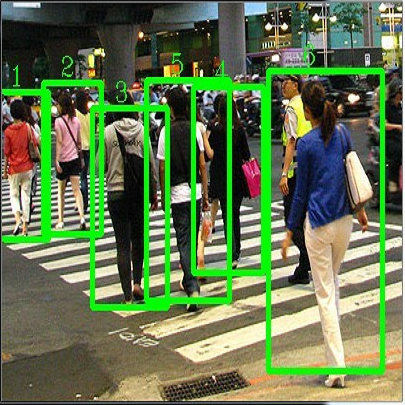Vision-based navigation of autonomous vehicles primarily depends on the Deep Neural Network (DNN) based systems in which the controller obtains input from sensors/detectors, such as cameras and produces a vehicle control output, such as a steering wheel angle to navigate the vehicle safely in a roadway traffic environment. Typically, these DNN-based systems of the autonomous vehicle are trained through supervised learning; however, recent studies show that a trained DNN-based system can be compromised by perturbation or adversarial inputs. Similarly, this perturbation can be introduced into the DNN-based systems of autonomous vehicle by unexpected roadway hazards, such as debris and roadblocks. In this study, we first introduce a roadway hazardous environment (both intentional and unintentional roadway hazards) that can compromise the DNN-based navigational system of an autonomous vehicle, and produces an incorrect steering wheel angle, which can cause crashes resulting in fatality and injury. Then, we develop a DNN-based autonomous vehicle driving system using object detection and semantic segmentation to mitigate the adverse effect of this type of hazardous environment, which helps the autonomous vehicle to navigate safely around such hazards. We find that our developed DNN-based autonomous vehicle driving system including hazardous object detection and semantic segmentation improves the navigational ability of an autonomous vehicle to avoid a potential hazard by 21% compared to the traditional DNN-based autonomous vehicle driving system.
翻译:自主车辆基于DNN的导航系统,通常通过监督的学习来培训这些基于DNN的自动车辆导航系统;然而,最近的研究表明,以DNN为基础的经过培训的DNN系统可能因扰动或对抗性投入而受损。同样,这种扰动可以通过意外的公路危险(如碎片和路障)引入基于DNN的自动车辆系统,从而减轻这种危险环境的不利影响。在本研究中,我们首先引入一个危险公路环境(有意和无意的公路危险),以在公路交通环境中安全驾驶车辆。这种危险环境会损害基于DNNN的自动车辆导航系统,这种系统会损害到一个以DNN为主的机动车辆驾驶系统,并产生错误的方向方向,可能造成致命和伤害。然后,我们开发了一个基于DNNN的机动车辆驾驶系统,利用物体探测和语义分解来减轻这种危险环境的有害影响,这有助于自动车辆安全地绕过这种危险。我们发现一个基于DNNN的机动车辆的自动驾驶系统,包括21号的自动导航系统,从而避免危险。


















